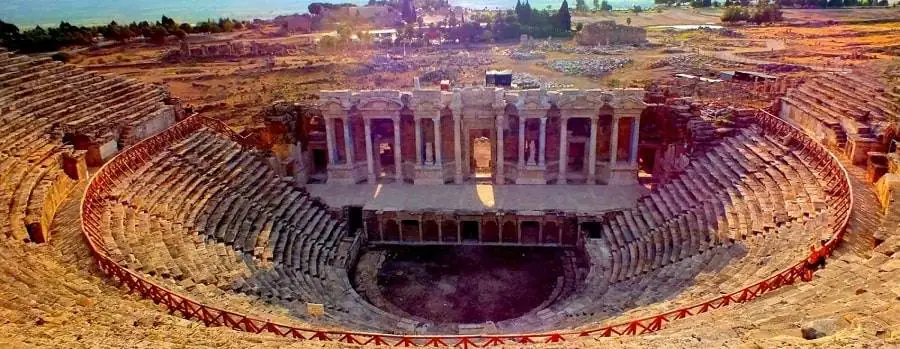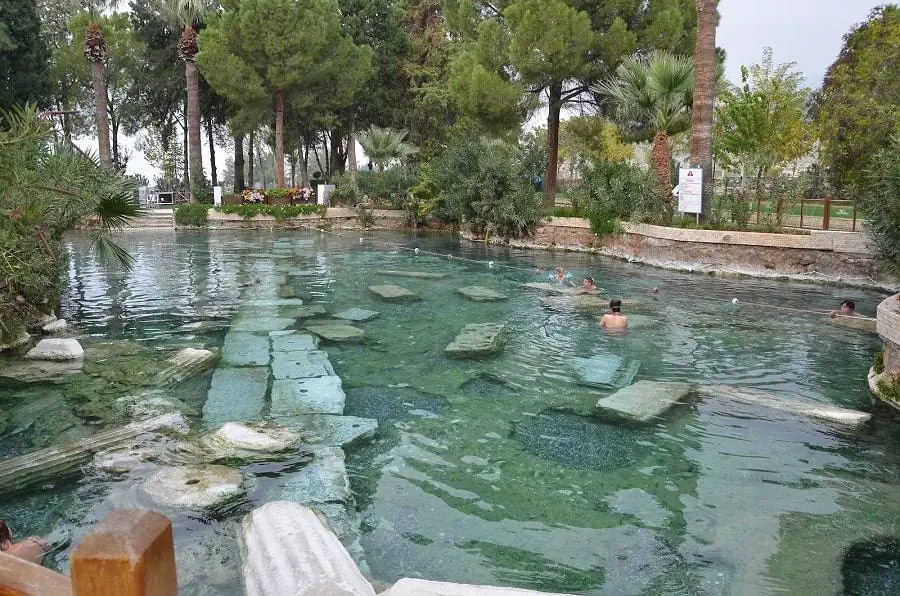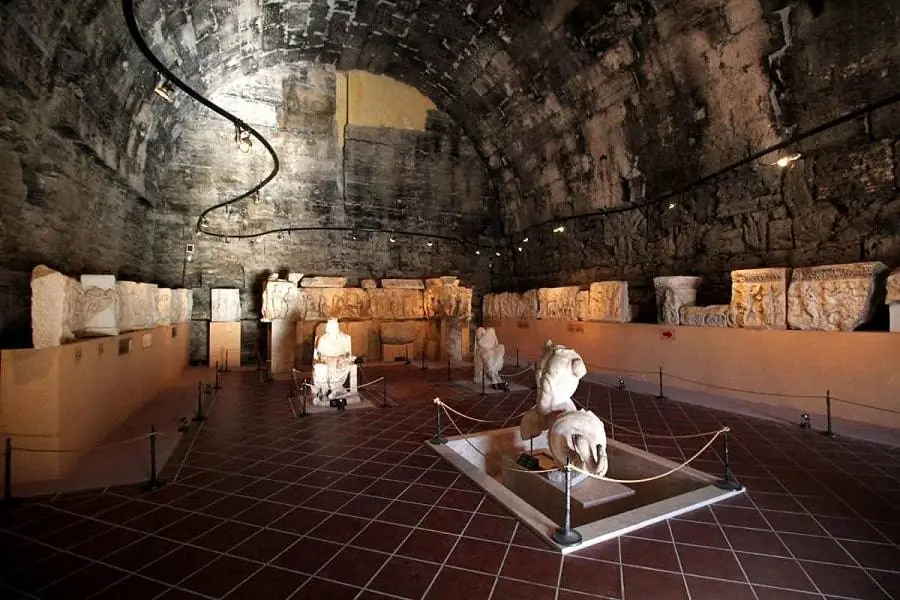The “cotton castle” of Turkey, Pamukkale, is located on the southern bank of Hierapolis, a historic city. Since countless years ago, when water moved farther from the calcareous hot water source, it grew colder and more solid, creating travertine terraces that now take the form of floors and staircases. The “radon gas” found in the Pamukkale Travertine has a calming effect on people. In addition to being a unique natural phenomenon, the Pamukkale Travertine hot springs have medicinal benefits. Let’s spotlight the most popular attractions in Pamukkale.
Hierapolis City Ruins

The ancient city of Hierapolis, which is often referred to as the “Holy City” (in Greek), is located close to Pamukkale, around 17 kilometres from Denizli. They are located on a steep slope that rises 350 metres. The earliest buildings were built on the site of Hierapolis in the second millennium BC. The Hierapolis plan is included in the image collection.
Cleopatra’s Pool

The white travertine pools at Pamukkale are surrounded by a particularly beautiful environment that is fed by the same hot springs. You are welcome to swim in the same waters where Cleopatra previously did! At a modern, well-run spa, you can use these legendary waters for healing. The water in the Antique Pool, which Cleopatra, the Egyptian Queen, liked, is clear and warm as contrasted to the white water in the lower pools.
♦ 4 Days Turkey Tour – Cappadocia Ephesus Pamukkale Tour
Hierapolis Archaeological Museum

The Archaeological Museum, one of the most popular attractions in Pamukkale, is located in the Ancient City of Hierapolis on a 14,000 m2 parcel of land. It is a collection of structures that also includes a gym, an old Roman bath, and a library. Between the reigns of Severus and Hadrian (117–138 A.D.), the Hierapolis Southern Bath, also known as the Great Bath Building, was constructed. It is located southwest of the city, close to the travertine canals’ entry.

